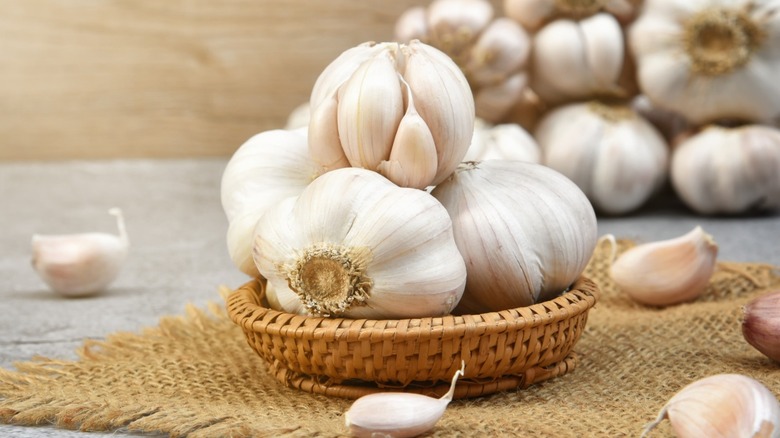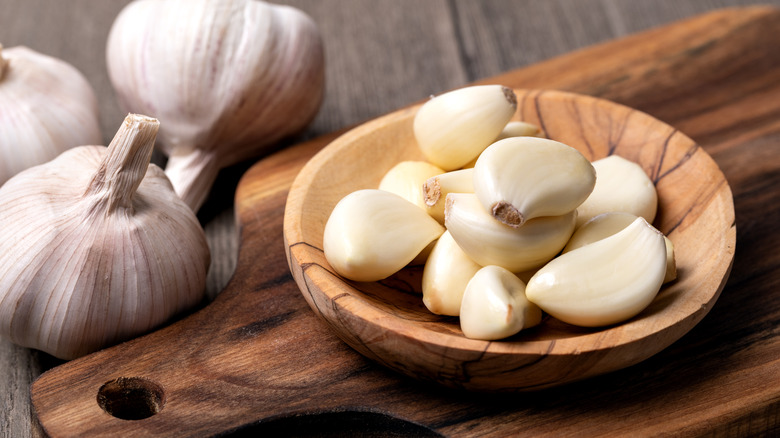Out Of Glue? Try Using Garlic
If you find yourself running short on glue, you might be able to look to your kitchen for a quick remedy. Garlic has historically been used as glue not just as a fast fix while in a pinch, but as the adhesive of choice. Chemistry World reports, while historical documents have long been known to describe this use, researchers more recently found chemical evidence of garlic glue in early gilded artworks from the 13th to 17th centuries.
Garlic-based glue was used to attach gildings, or very thin layers of decorative gold or silver leaf, to paintings, picture frames, and furniture. Garlic glue is most fitting for more delicate and fragile materials like this, Mental Floss adds, and it can also be used on paper and glass. The only downside, of course, is the smell. So how do you go about making your own garlic glue? The process is actually pretty easy.
How to make garlic glue
B+C says to peel a fresh head of garlic, cut the cloves in half, and then squeeze the cloves to extract the sticky juice. You can then apply that extracted juice to the surface you want to glue. The guide further explains the juice isn't as strong as super glue, but it does work well on paper, leather, and glass. If you want to make a garlic glue that's a little closer in texture to normal glue, you can filter the juice from as many cloves as needed and then add in plaster, creating a paste.
Add as much plaster as needed to reach your desired consistency (and if you add too much plaster and over-thicken the mix, you can always thin it out again with some water). Another DIY tip from Cleverly suggests using the garlic glue for mending cracks in glass, by rubbing a cut garlic clove along the crack, then rubbing away the excess with a paper towel. The garlic juices adhere to the glass, filling the crack.

